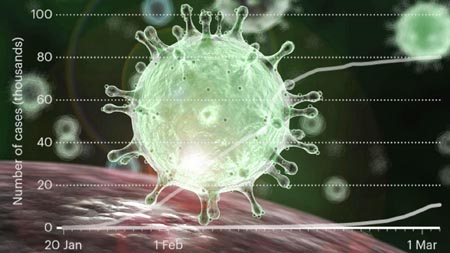 Infections are exponential (think of a curved line shaped like a J).
Infections are exponential (think of a curved line shaped like a J).
Let’s assume that each person infected will infect two other people (in other words, the number of people infected doubles every two weeks). If we start with one case on Week 1 and each individual passes the virus to two other people, at Week, 52, we would have had over one hundred million cumulative cases. Yes, you read that correctly.
On the other hand, if we assume that each person infected will infect one other person (like with linear math, think straight line graph) and that the virus grows in a linear fashion, it doesn’t seem so bad. If we start with one case on Week 1 and each individual passes the virus to one other person (if we go up by two weeks, one more person will get an infection), at Week 52, we would have had 26 cumulative cases.
Exponential Growth of New Cases if Doubling the Number of Infections Per 2 Weeks:
Week 0: 1
Week 2: 2
Week 4: 4
Week 6: 8
Week 8: 16
Week 10: 32
Week 12: 64
Week 14: 128
Week 16: 256
Week 18: 512
Week 20: 1,024
Week 22: 2,048
Week 24: 4,096
Week 26: 8,192
Week 28: 16,384
Week 30: 32,768
Week 32: 65,536
Week 34: 131,072
Week 36: 262,144
Week 38: 524,288
Week 40: 1,048,576
Week 42: 2,097,152
Week 44: 4,194,304
Week 46: 8,388,608
Week 48: 16,777,216
Week 50: 33,554,432
Week 52: 67,108,864
This is a big difference and part of why we don’t always perceive the threat when cases are low. They start to grow slowly until they reach very high numbers. At that point, growth will continue to increase at an alarming rate. This is where we are right now in many parts of the United States.
The good news? Your actions matter. Physical distancing, meeting outdoors, wearing a mask, restricting contacts and time spent with them, and basic hygiene measures are all preventive measures that work to slow the spread of COVID-19. Share this message with others.
Stay safe. Stay sane.








